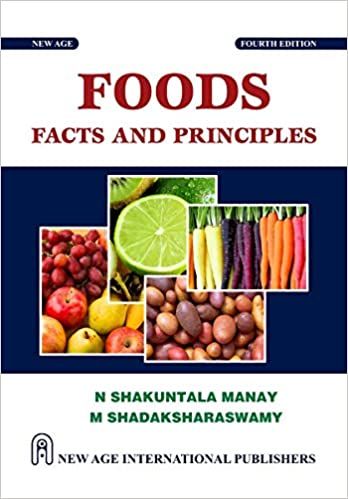Food Adultrician
1. Define Adulteration. Explain the types of Adulterants.
Adulteration: It is defined as the process by which the quality or the nature of a given substance is reduced through the addition of a foregin or an inferior substance and the removal of a vital element.
Types of Adulterants: Three types
Incidental Adulteration: Ignorance, negligence or lack of proper storage facilities
Intentional Adulteration: addition, substitution or abstraction or substances which adversely affect the purity and quality of foods.
Metallic Contamination: Cadmium, Mercury, Arsenic, Antimony and cobalt. Ex: Turmeric is coated with lead chromate: Lead brings pathological pain, anaemia, muscular paralysis, insomnia and brain damage.
2. Give an account on effects of Food Adulteration.
The effects of food adlteration are classified into three types which are as follows:
No Effect / Harmless Adulterants:
Ex: Addition of water to milk may not affect the consumer unless the quality of water is poor.
Acute Toxicity Effect: Adulterants containing micro-organisms or their toxins affect the consumer within hours or a few days.
Ex: Clostridium botulinus toxin causes botulism - Double vision, muscular paralysis.
Chronic Toxicity Effects: Effects of consumption of these adulterants over a long period of time, consumed through food causes damage due to accumulation of the toxicant in the body.
Ex: Metal contaminants- lead, mercury, cadmium causes failure of the central nervous system and death.
3. Mention the national and international standards for ensuring the quality and safety of a food product.
The governments in many countries play an important role in ensuring food quality. International standards and National official standards are set to safeguard the consumer’s health and ensure fair food trade practices. The national standards are broadly classified into two categories which are as follows:
Mandatory/ Regulatory Measures:
- Prevention of Food Adulteration Act, 1954
- Essential Commodities Act, 1955
- Fruit Products Order, 1955
- Vegetable oils Products Order, 1998
- Solvent Extracted Oil, De-oiled Meal and Edible flour (Control) Order, 1967
- Meat Products control Order, 1973
- Milk and Milk Products Order,1992
- Cold Storage Order, 1980.
Voluntary Standards:
- Bureau of Indian standards Act, 1986 / Indian Standards Institution (ISI) mark
- The Agricultural Products (Grading & Marketing) Act, 1937 (AGMARK)
- Export Inspection Council
- Consumer Protection act, 1986
International Standards:
The FAO and WHO established a commission for setting international food standards.
- Codex Alimentarius Commission
- World Trade Organization (WTO)
- International Organization for Standardization (ISO 9000), ISO 14,000 and ISO 22,000 : 2005
- Hazard Analysis of Critical Control Points (HACCP)








